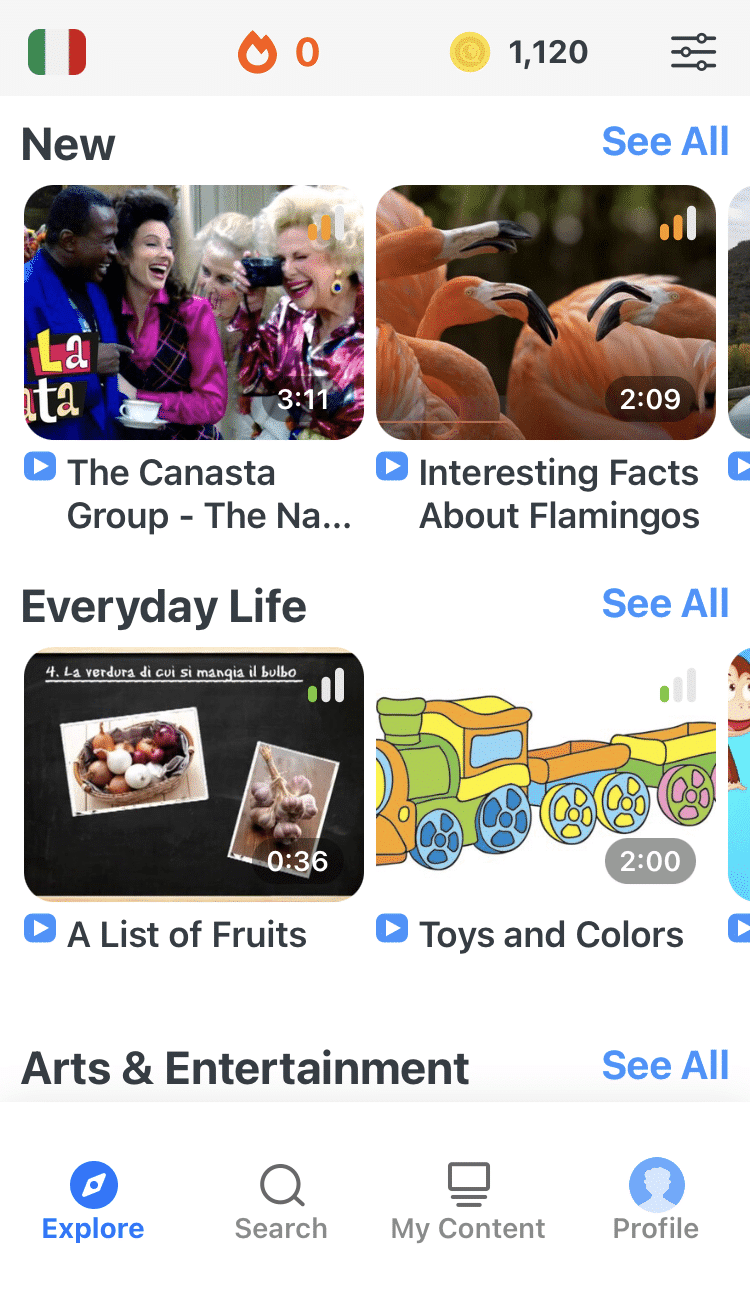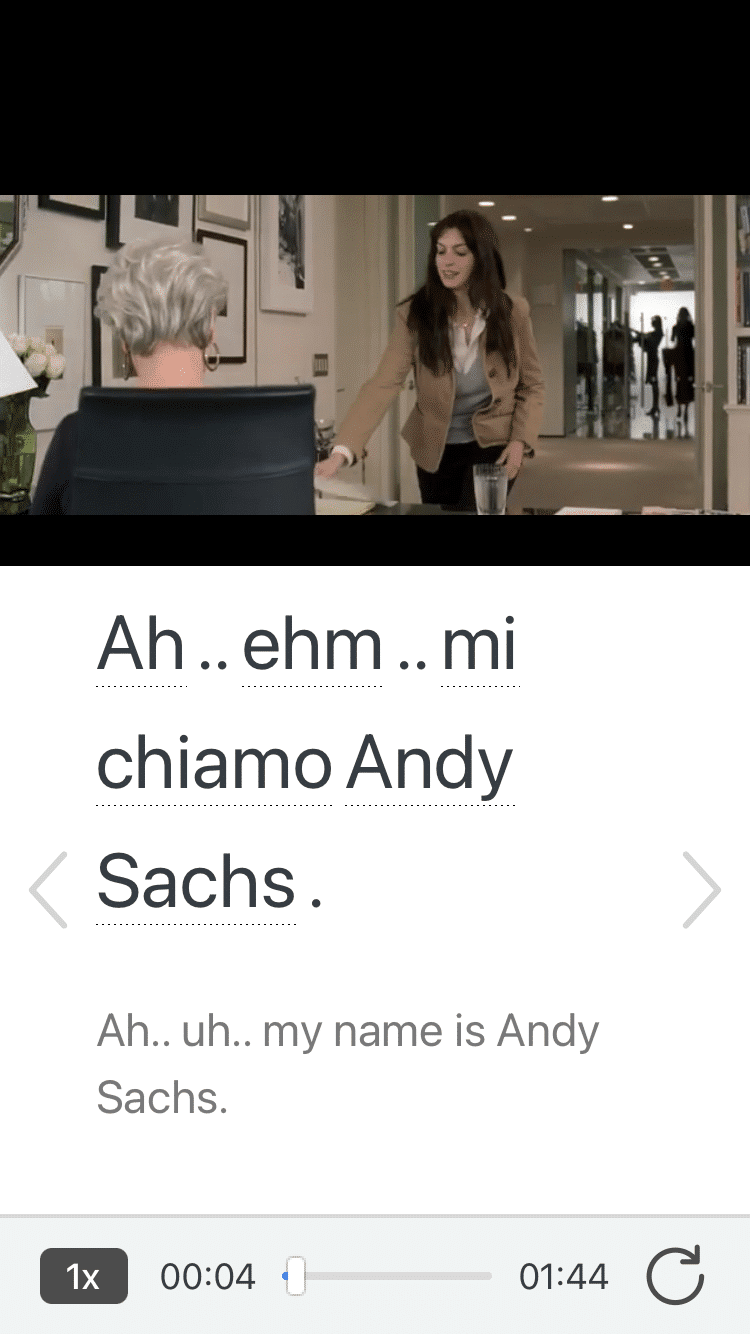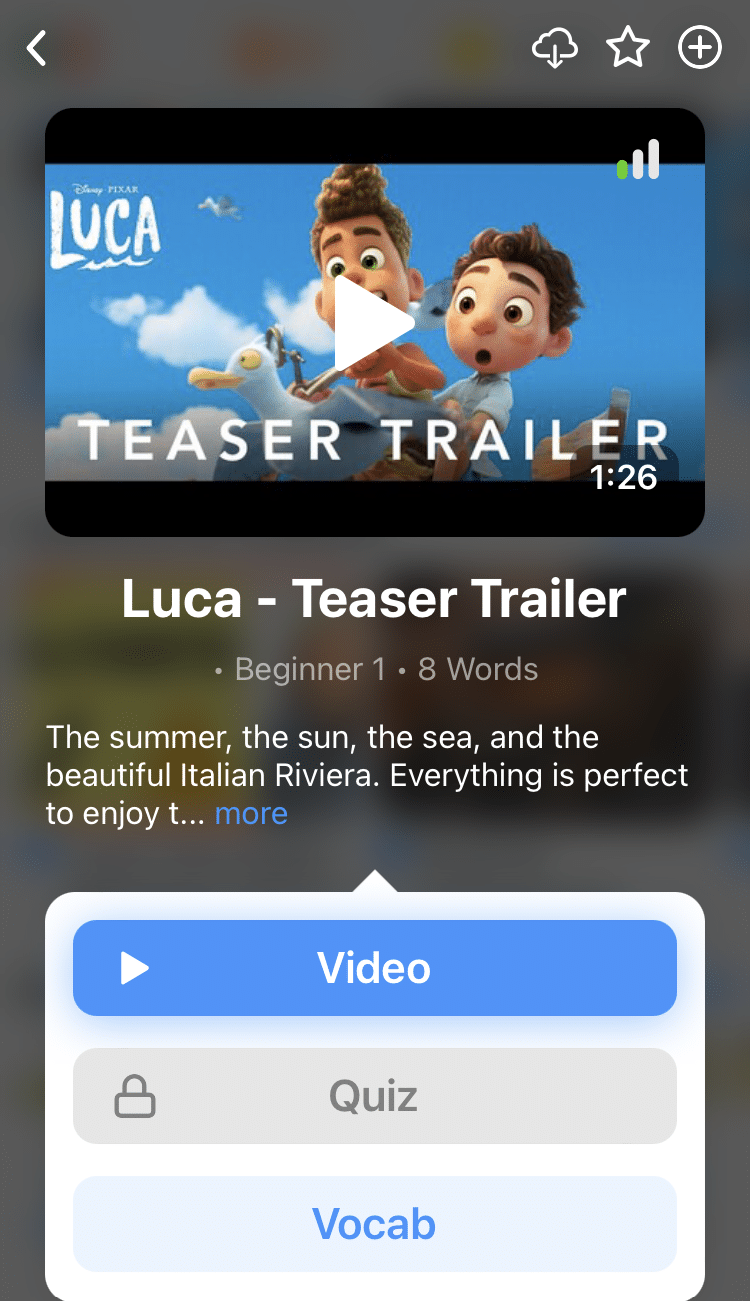
Colors in Italian
Life in Italy is wonderfully colorful, from the food to the landscape in colore vivace (in vivid color).
And if you want to add vibrance to your language practice, then it’s time to learn how to talk about colors in Italian!
The words and expressions below are taken straight from bell’Italia (beautiful Italy), and they show just how expressive Italian can be.
Contents
- 12 Essential Colors in Italian
- The Grammar of Colors in Italian
- 8 Colorful Italian Expressions
- And One More Thing...
Download: This blog post is available as a convenient and portable PDF that you can take anywhere. Click here to get a copy. (Download)
12 Essential Colors in Italian

Learning colors in any language can be tough but you can minimize the challenge with a mnemonic technique. Take the first letter of each color word to memorize the order of the colors in a rainbow.
VIBVGAR is the Italian take on this little trick.
When I break it up into Vib V Gar, it almost seems like a character’s name—cue the mental picture of a colorful unicorn!—so the sequence pops instantly into my head. I know it’s silly but it works for me; hopefully it’ll work for you, too.
Below are the names of the colors in Italian, following Vib V Gar. You can make these colors more specific by adding chiaro (light) or scuro (dark) after, like with verde scuro (dark green).
We’ve also included some other common colors that aren’t part of the rainbow.
Viola — Violet
Gli occhi viola sono adorabili.
(The violet eyes are lovely.)
Indaco — Indigo
Even though indaco technically means dark blue, it’s used more commonly than blu scuro (dark blue).
Le sue orecchie indaco sono bellissimi.
(Her indigo ears are beautiful.)
Blu — Blue
Nuvole blu la circondano.
(Blue clouds surround her.)
Verde — Green
L’erba verde cresce sotto di lei.
(Green grass grows beneath her.)
Giallo — Yellow
Le sue ali gialle sbattano.
(Her yellow wings flutter.)
Arancione — Orange
Il suo corno arancione è lucido.
(Her orange horn is shiny.)
Rosso — Red
La sua pelliccia rossa è bellissima.
(Her red fur is beautiful.)
Nero — Black
La notte è così nera.
(The night is so black.)
Marrone — Brown
L’orso marrone è enorme.
(The brown bear is huge.)
Rosa — Pink
Mi piace il rosa.
(I like pink.)
Bianco — White
Le colombe bianche sono per i matrimoni.
(White doves are for weddings.)
Azzurro — Light blue, blue
A special note about azzurro, the color that’s so very important in Italy.
Azzurro is a shade of light blue that’s so well-loved it’s actually the Italian national color. The national football (that is, soccer) team is named Gli Azzurri (The Blues) because of their blue jerseys. And a wildly popular song is titled “Azzurro.”
La squadra indossa l’azzurro.
(The team wears light blue.)
The Grammar of Colors in Italian
Remember that color words are adjectives, so they’re used to describe or clarify nouns. In Italian, adjectives usually follow the nouns they modify.
Italian adjectives must agree with the gender—masculine or feminine—state of the noun they describe. Colors are no exception!
For instance, take a look at these two examples:
la scarpa rossa (the red shoe)
un cane rosso (a red dog)
The first noun, “shoe,” is feminine in Italian while the second, “dog,” is masculine. Notice how the adjective changes its ending based on the noun it’s modifying.
Finally, Italian adjectives also agree with the noun in number—singular or plural:
un cane rosso (a red dog) → cani rossi (red dogs)
Masculine adjectives end in -o and change their ending to -i in their plural form. Feminine adjectives end in -a and become plural by changing the ending to -e.
As always, there are exceptions to these rules. There are a few colors (blu, viola, rosa, indaco) that don’t change in gender or number.
Mi piace leggere i romanzi rosa.
(I like to read romance novels.)
Compro le scarpe blu.
(I’m buying blue shoes.)
A good way to become familiar with how to use color words in Italian is by practicing writing your own sentences. You could also use an immersion program like FluentU to find more examples of this vocabulary used in context.
FluentU takes authentic videos—like music videos, movie trailers, news and inspiring talks—and turns them into personalized language learning lessons.
You can try FluentU for free for 2 weeks. Check out the website or download the iOS app or Android app.
P.S. Click here to take advantage of our current sale! (Expires at the end of this month.)
8 Colorful Italian Expressions

Now it’s time to learn some fun Italian expressions that can definitely add to your language skills. They’re common in Italian songs, literature and movies so you may have already heard some of them!
Il principe azzurro — Light blue prince
While this romantic phrase literally means “light blue prince,” it’s not used to describe a blue royal.
It does, however, imply that a man is someone special—a Prince Charming!
Il suo ragazzo è davvero un principe azzurro!
(Her boyfriend is a real Prince Charming!)
Essere nero — To be black
The literal translation, to be black, refers to a mood. The expression is commonly used to describe someone when they’re upset or angry.
Non prestare attenzione a lui. È nero.
(Don’t pay attention to him. He’s in a bad mood.)
Una mosca bianca — A white fly
Common houseflies are black so when something or someone is called una mosca bianca (a white fly) it means that they’re unique.
While most of us wouldn’t think that being called an insect is a good thing, in this case it’s a real compliment!
La moglie di Enzo è una mosca bianca.
(Enzo’s wife is exceptional.)
La pecora nera — the black sheep
This expression is familiar in many languages.
Loosely translated, this common idiom refers to a family member who’s unlike the others. It can imply rebelliousness or a desire to do things in a less-than-typically-desired manner. The connotation is generally unfavorable.
It sounds especially melodious in Italian, doesn’t it?
Joe è la nostra pecora nera.
(Joe is our black sheep [of the family].)
Farne di tutti i colori — to be up to all sorts of things; mischief
In this case, “colorful” refers to doing all sorts of things. Think of shooting the breeze with your friends or kids hanging out.
Loro continuano a farne di tutti i colori.
(They continue to be up to all sorts of things.)
Essere in rosso — to be in red
Being “in the red” isn’t an expression used only by Italians. It means to be short on money.
Il mio portafoglio è vuoto. Sono in rosso!
(My wallet is empty. I am in the red!)
Anima nera — black soul
Whether or not you believe in souls, this is a way of saying that someone is wicked.
È un uomo cattivo con un’anima nera.
(He’s a bad man with a wicked soul.)
Dama bianca — white lady
This phrase is another word for fantasma (ghost). Specifically, dama bianca is referred to as an eerie “vision” that’s said to foretell death.
Sta’attento! Ho sognato dellla dama bianca ieri sera!
(Be careful! I dreamt about the white lady last night!)
Life in Italy is molto colorata (very colorful), and the Italian language can describe everything so vividly that it comes to life. This goes for imaginary rainbow unicorns, too!
Now that you’re familiar with colors and how to use them, you should be able to paint pictures with your words.
Buona fortuna! (Good luck!)
Download: This blog post is available as a convenient and portable PDF that you can take anywhere. Click here to get a copy. (Download)
And One More Thing...
If you're as busy as most of us, you don't always have time for lengthy language lessons. The solution? FluentU!
Learn Italian with funny commericals, documentary excerpts and web series, as you can see here:

FluentU helps you get comfortable with everyday Italian by combining all the benefits of complete immersion and native-level conversations with interactive subtitles. Tap on any word to instantly see an image, in-context definition, example sentences and other videos in which the word is used.

Access a complete interactive transcript of every video under the Dialogue tab, and review words and phrases with convenient audio clips under Vocab.

Once you've watched a video, you can use FluentU's quizzes to actively practice all the vocabulary in that video. Swipe left or right to see more examples of the word you’re on.

FluentU will even keep track of all the Italian words you’re learning, and give you extra practice with difficult words. Plus, it'll tell you exactly when it's time for review. Now that's a 100% personalized experience!
The best part? You can try FluentU for free with a trial.
Start using the FluentU website on your computer or tablet or, better yet, download the FluentU app from the iTunes or Google Play store. Click here to take advantage of our current sale! (Expires at the end of this month.)



